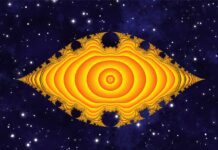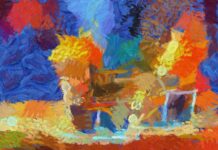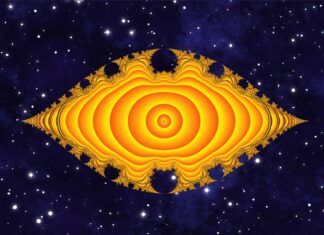OpenSea: Pioneering the Virtual Frontier of NFT Marketplaces
In the rapidly evolving landscape of blockchain technology and digital assets, OpenSea has emerged as a pioneering force, establishing itself as one of the most prominent and influential Non-Fungible Token (NFT) marketplaces. OpenSea, founded in 2017 by Alex Atallah and Nate Chastain, has effectively redefined the way creators, collectors, and investors interact with digital art, collectibles, virtual real estate, and other unique digital assets. As an open and decentralized platform, OpenSea empowers individuals to engage in the creation, discovery, and trading of NFTs, ushering in a new era of digital ownership and creative expression.
OpenSea’s significance lies in its transformative impact on the concept of ownership in the digital realm. NFTs, which are distinct units of data representing ownership of a specific digital item or piece of content, have gained substantial traction within the realms of art, entertainment, gaming, and beyond. OpenSea’s platform serves as a marketplace where NFTs can be bought, sold, and auctioned, effectively enabling creators to monetize their digital creations in unprecedented ways. With an intuitive interface and user-friendly features, OpenSea has played a pivotal role in driving mainstream adoption of NFTs, revolutionizing the way digital art and collectibles are valued, bought, and sold.
The platform’s approach to decentralization and openness aligns with the fundamental principles of blockchain technology. Blockchain, the underlying technology behind cryptocurrencies and NFTs, ensures transparency, security, and immutability by maintaining a decentralized and distributed ledger of transactions. OpenSea harnesses these attributes to create an environment where artists, collectors, and traders can engage directly without intermediaries, fostering a sense of autonomy and empowerment within the digital economy. This aspect of the platform resonates strongly with the ethos of Web 3.0, where individuals have greater control over their online interactions and transactions.
OpenSea’s impact transcends its role as a mere marketplace. It has become a catalyst for artistic innovation and a driving force behind the evolution of digital artistry. The platform has given rise to a new breed of artists who specialize in creating digital artworks designed specifically for the NFT market. These artists often leverage cutting-edge technologies, such as virtual reality and augmented reality, to craft immersive and interactive experiences that challenge traditional notions of art. In turn, this has led to discussions about the very definition of art and the nature of creativity in the digital age.
One of the pivotal characteristics of OpenSea is its agnostic approach to content. While the platform is renowned for its association with digital art, it accommodates a diverse range of digital assets. Collectibles, virtual real estate, domain names, in-game items, and even music have found their place within OpenSea’s expansive marketplace. This inclusivity reflects the platform’s commitment to being a versatile hub for creators and collectors across different domains, further contributing to its status as a trailblazer in the NFT landscape.
OpenSea’s journey, however, has not been without its challenges and controversies. The NFT space, still relatively nascent, grapples with issues related to copyright infringement, environmental concerns stemming from energy-intensive blockchain operations, and market manipulation. OpenSea, as a frontrunner in this space, has encountered its fair share of criticisms and ethical dilemmas. Instances of unauthorized use of copyrighted material being minted as NFTs on the platform have sparked debates about ownership, originality, and digital rights. Additionally, concerns about the ecological footprint of blockchain technology have prompted discussions about the sustainability of NFTs, leading platforms like OpenSea to explore more environmentally friendly alternatives.
OpenSea’s response to these challenges has been multifaceted. The platform has implemented measures to enhance content verification and mitigate copyright infringement, aiming to create a more secure and trustworthy environment for creators and collectors. Furthermore, the broader blockchain community is actively seeking solutions to address the energy consumption issue, with the transition from proof-of-work to proof-of-stake consensus mechanisms being explored as a means to reduce carbon emissions associated with blockchain operations.
In conclusion, OpenSea stands as a trailblazing entity that has fundamentally reshaped the way we perceive ownership, creativity, and value in the digital age. By pioneering the NFT marketplace and fostering an ecosystem that embraces openness, decentralization, and innovation, OpenSea has provided a platform for artists, collectors, and enthusiasts to explore new horizons of artistic expression and economic opportunities. Its journey exemplifies the complex interplay between technology, art, economics, and ethics, reflecting both the tremendous potential and the evolving challenges within the virtual frontier of NFTs and digital ownership.
Here are five key features of OpenSea:
Decentralized Marketplace:
OpenSea operates as a decentralized platform, utilizing blockchain technology to create a marketplace where users can buy, sell, and trade NFTs directly without the need for intermediaries. This decentralized approach ensures transparency, security, and immutability of transactions, empowering users to have greater control over their digital assets.
Diverse Asset Types:
While OpenSea is renowned for its association with digital art, it accommodates a wide range of digital assets beyond just artworks. Users can find collectibles, virtual real estate, domain names, in-game items, music, and more within the platform. This diversity reflects OpenSea’s commitment to being a versatile hub for creators and collectors across various domains.
Customizable Storefronts:
OpenSea allows users to create customizable storefronts where they can showcase their NFT collections or creations. These storefronts act as personalized galleries, enabling creators to present their digital assets in a visually appealing and unique manner. This feature enhances the overall user experience and facilitates brand building for artists and collectors.
Auction and Bidding Mechanisms:
The platform offers various auction and bidding mechanisms that allow users to engage in dynamic price discovery for NFTs. This includes traditional English auctions, Dutch auctions, and even interactive mechanisms like “dutch drop” auctions where the price decreases over time. These features add an element of excitement and competitiveness to the trading process.
Gas Fee Optimization:
OpenSea acknowledges and addresses the concerns surrounding the energy consumption and associated costs of blockchain transactions. The platform provides features that help users optimize gas fees, which are the fees paid to miners for processing transactions on the blockchain. This enhances the user experience by making transactions more cost-effective and sustainable.
These key features collectively contribute to OpenSea’s status as a pioneering NFT marketplace, fostering an ecosystem that empowers creators, collectors, and enthusiasts to engage with digital assets in innovative and meaningful ways.
OpenSea: A Digital Tapestry of NFT Innovation and Possibilities
In the vast expanse of the digital universe, OpenSea shines as a luminous star, illuminating the path towards a new era of artistic expression, creative ownership, and economic interactions. The platform’s journey is a testament to human ingenuity and the convergence of technology, art, and commerce. OpenSea’s story is one of exploration, innovation, and the forging of connections across borders and cultures, all within the intangible realm of ones and zeros.
At its core, OpenSea is a digital agora, a marketplace where the ephemeral and the tangible intersect in a dance of bytes and pixels. It fosters a thriving ecosystem where creators, collectors, and enthusiasts congregate to engage with the intangible treasures of the digital age. The platform’s very existence underscores the malleability of value in the digital realm – a realm where a piece of code, an arrangement of pixels, can hold as much significance as a physical artifact.
OpenSea’s impact transcends its role as a marketplace; it is a catalyst for an ongoing dialogue about the nature of art and the essence of ownership. As artists navigate uncharted territories to create NFTs, they challenge the boundaries of what constitutes art. These digital artisans wield algorithms and virtual brushes to craft works that evoke emotions, stir thoughts, and beckon us to reimagine our artistic sensibilities. The canvas of OpenSea is a playground where traditional notions of aesthetics intertwine with the boundless possibilities of code.
Beyond its technological prowess, OpenSea has woven a narrative of democratization. It has democratized the art world, allowing creators from all walks of life to showcase their talents and monetize their creations without the need for traditional gatekeepers. This democratization extends to collectors as well, granting them access to a vast array of artistic styles, genres, and mediums that span the digital spectrum. The platform levels the playing field, giving prominence to emerging artists alongside established virtuosos.
OpenSea’s existence is a testament to the interconnectedness of the global village. It is a digital bazaar where individuals from across continents and cultures converge, united by a shared passion for creativity and innovation. The platform’s diversity mirrors the rich tapestry of human experience, where voices and visions from different corners of the world harmonize in a symphony of digital expression. Through OpenSea, an artist in Tokyo can captivate an audience in New York, a collector in London can acquire a piece from a studio in Buenos Aires, and the boundaries of geography become blurred in the brilliance of the digital dawn.
In the ever-evolving narrative of technological advancement, OpenSea stands as a chapter that challenges the normative understanding of ownership. As NFTs carve their niche in the digital landscape, they redefine the concept of possessing a piece of art. Ownership becomes more than a physical grasp; it morphs into an encrypted key that unlocks the digital essence of a creation. The canvas extends beyond the frame, enveloping the collector in a symbiotic relationship with the artwork – a relationship facilitated by the cryptographic marvels of blockchain technology.
With every click, every transaction, OpenSea adds another brushstroke to the canvas of digital history. It is a testament to humanity’s ability to adapt, evolve, and find novel ways to connect in a world characterized by rapid change. The platform has rekindled the spirit of exploration that has driven innovation throughout history. Just as explorers once sailed uncharted seas and ventured into the unknown, artists and creators on OpenSea voyage into the digital wilderness, daring to unravel the uncharted territories of creativity.
Yet, amid the splendor and wonder, OpenSea faces its own trials and tribulations. The digital Eden it nurtures is not without its serpents. Concerns about copyright infringement, authenticity, and the environmental impact of blockchain technology loom like shadows in the virtual landscape. The journey to navigate these challenges is a testament to the platform’s resilience and its commitment to steering the digital ship on a steady course towards a sustainable and equitable future.
OpenSea, a name that resonates with possibility and imagination, continues to evolve. It is not a monolith frozen in time but a living, breathing entity that adapts to the ever-shifting tides of technology, culture, and societal change. As it continues to write its chapter in the chronicles of the digital age, OpenSea invites us to contemplate not only the potential of technology but the potential of humanity itself – to innovate, to create, and to redefine the boundaries of what is possible in the boundless realms of the virtual frontier.


















